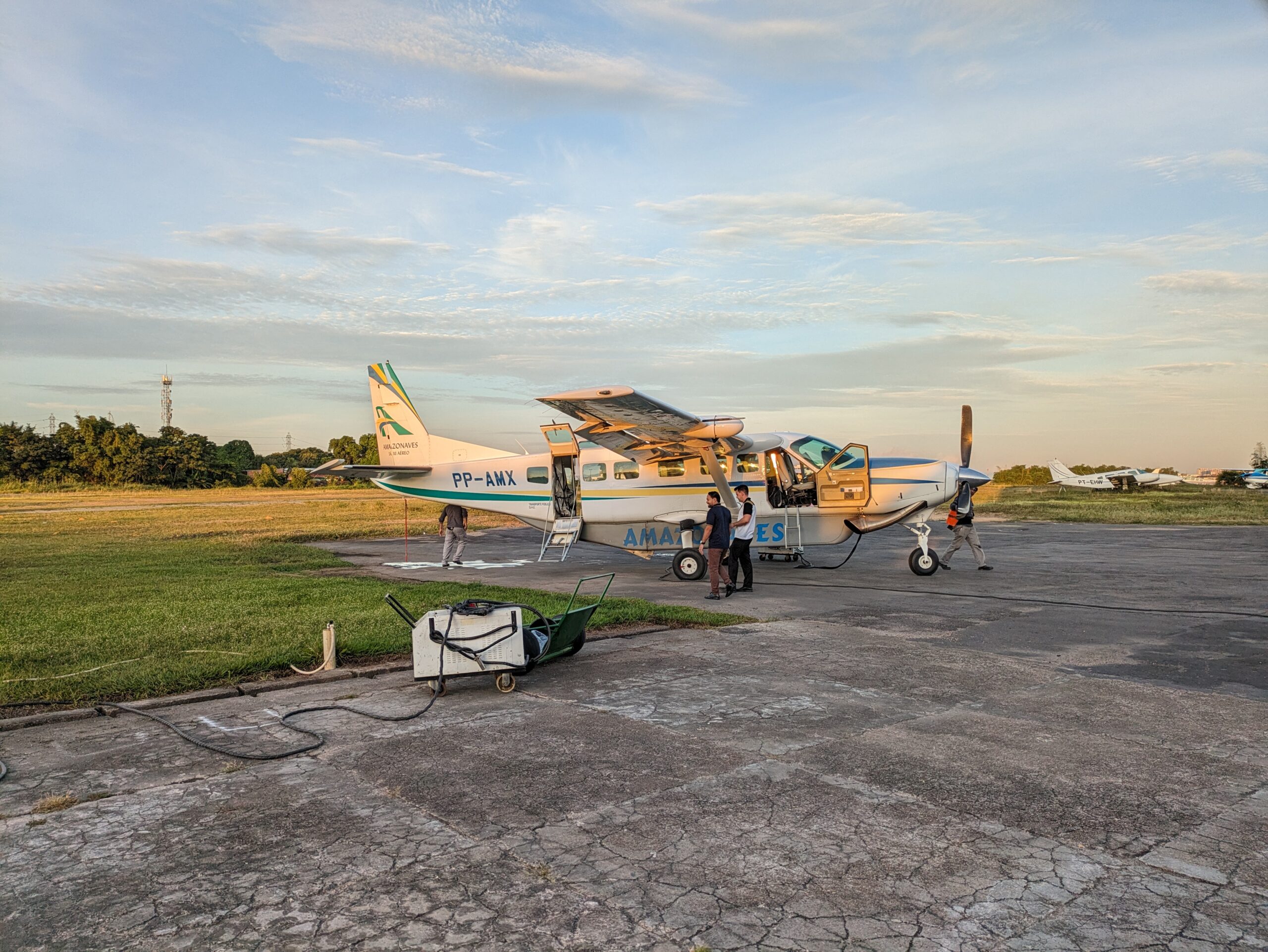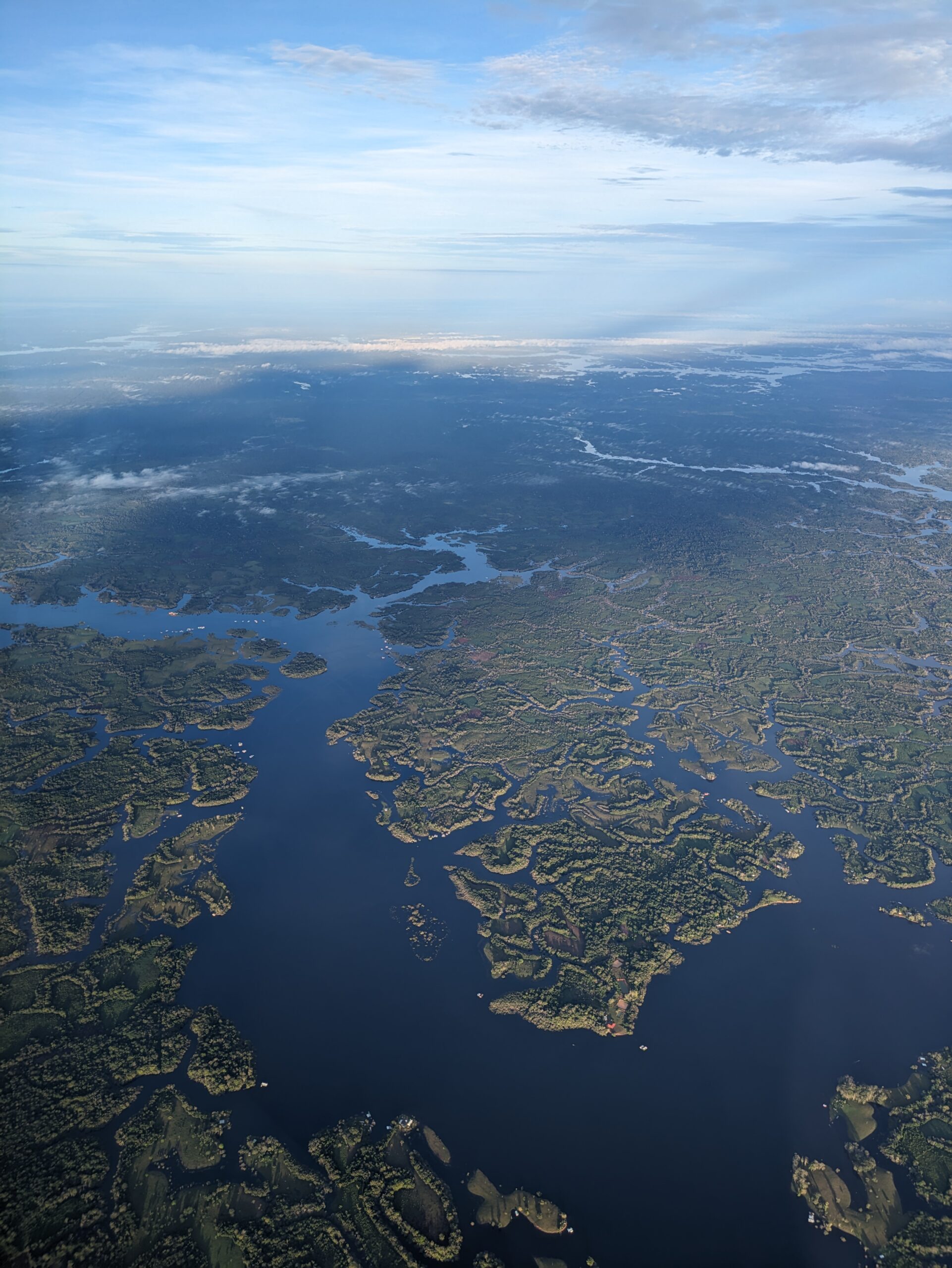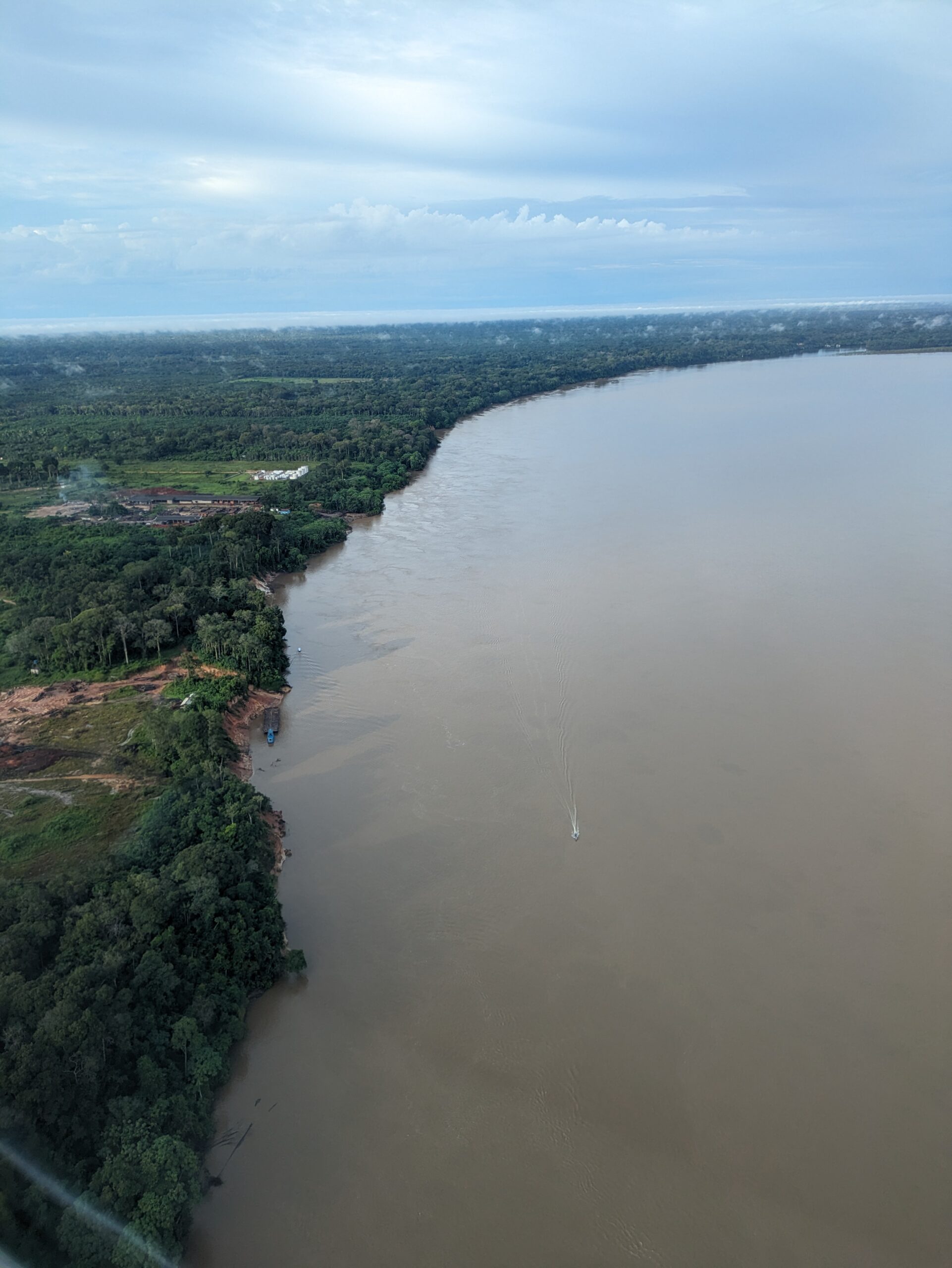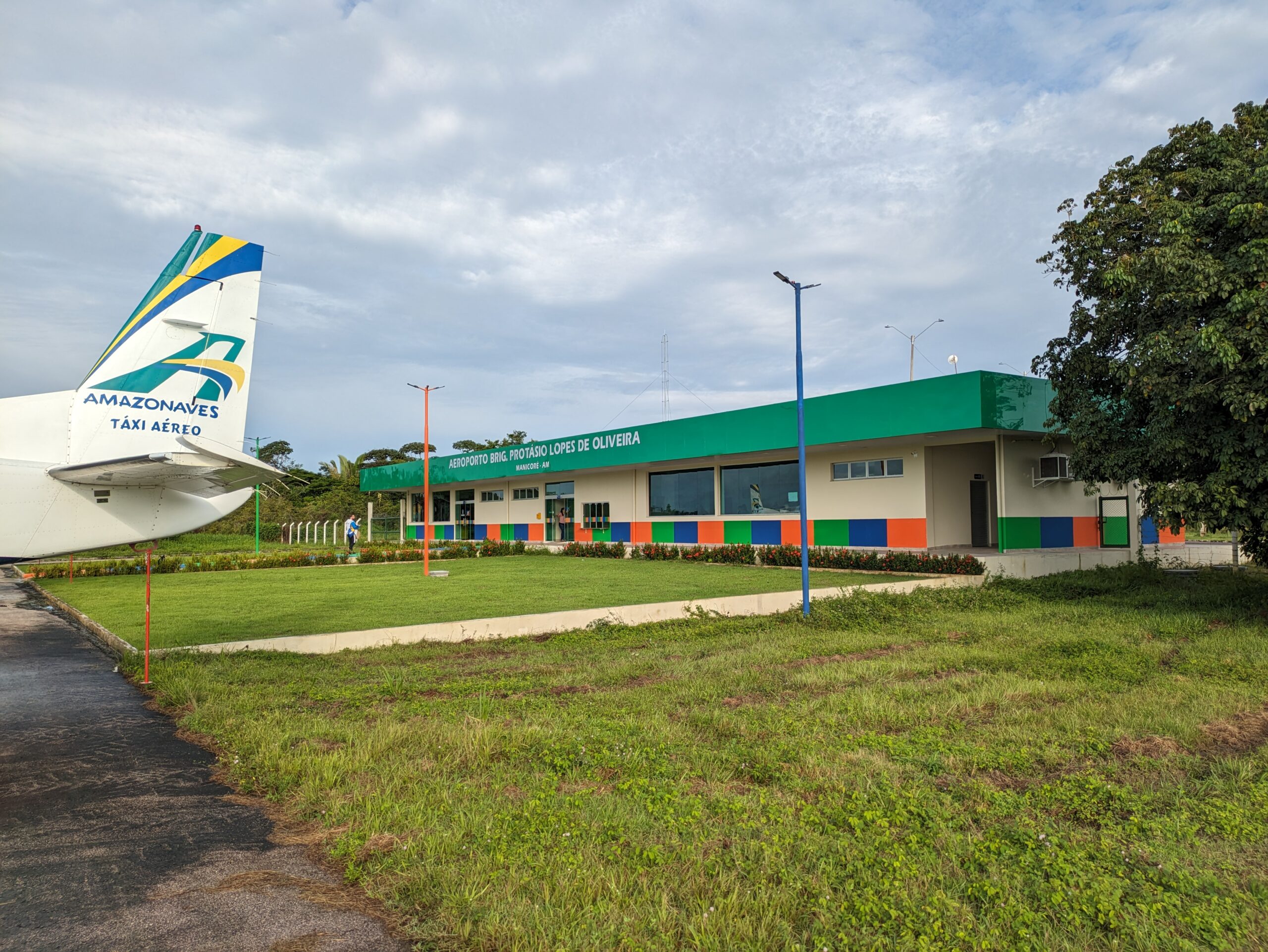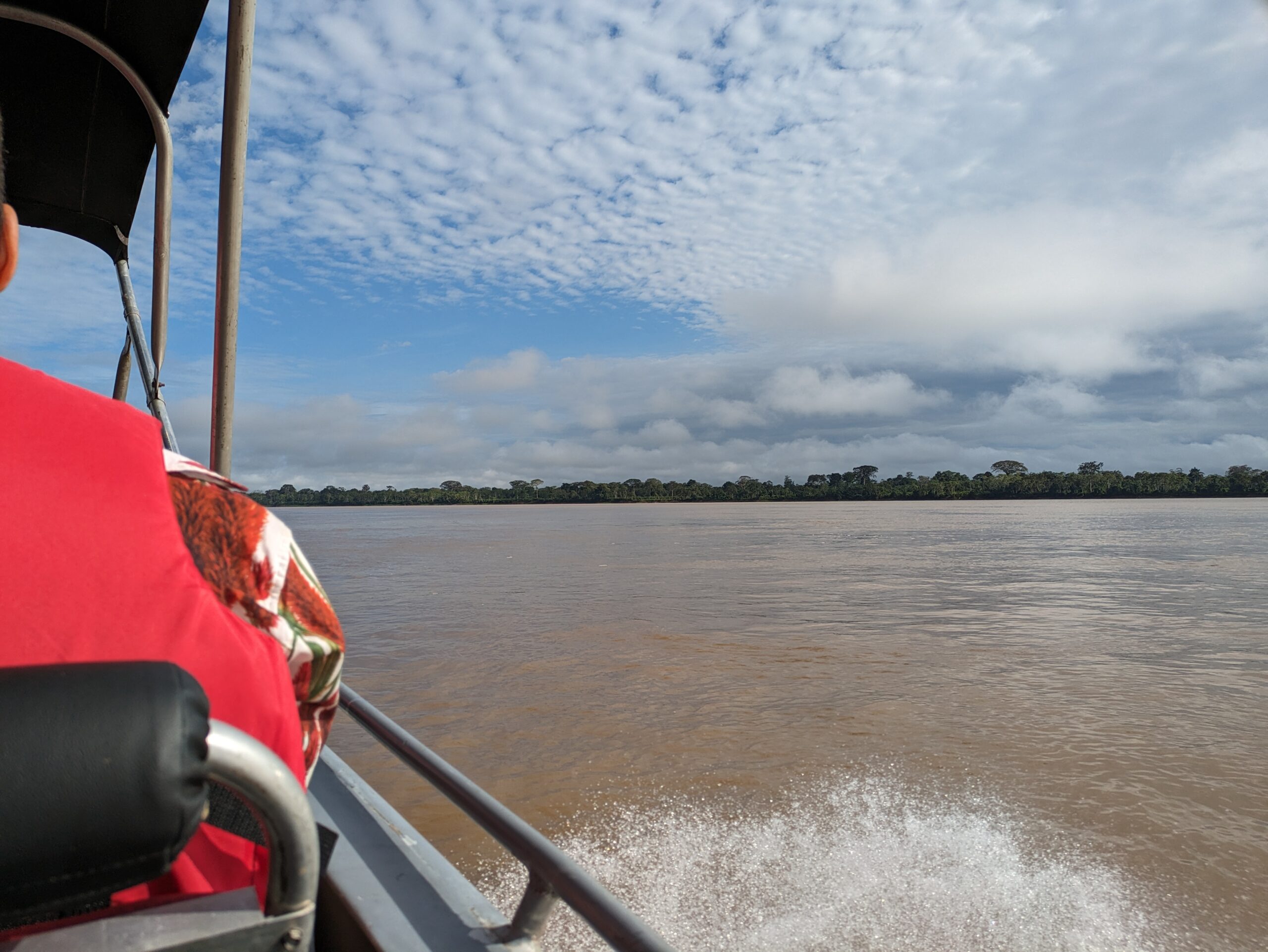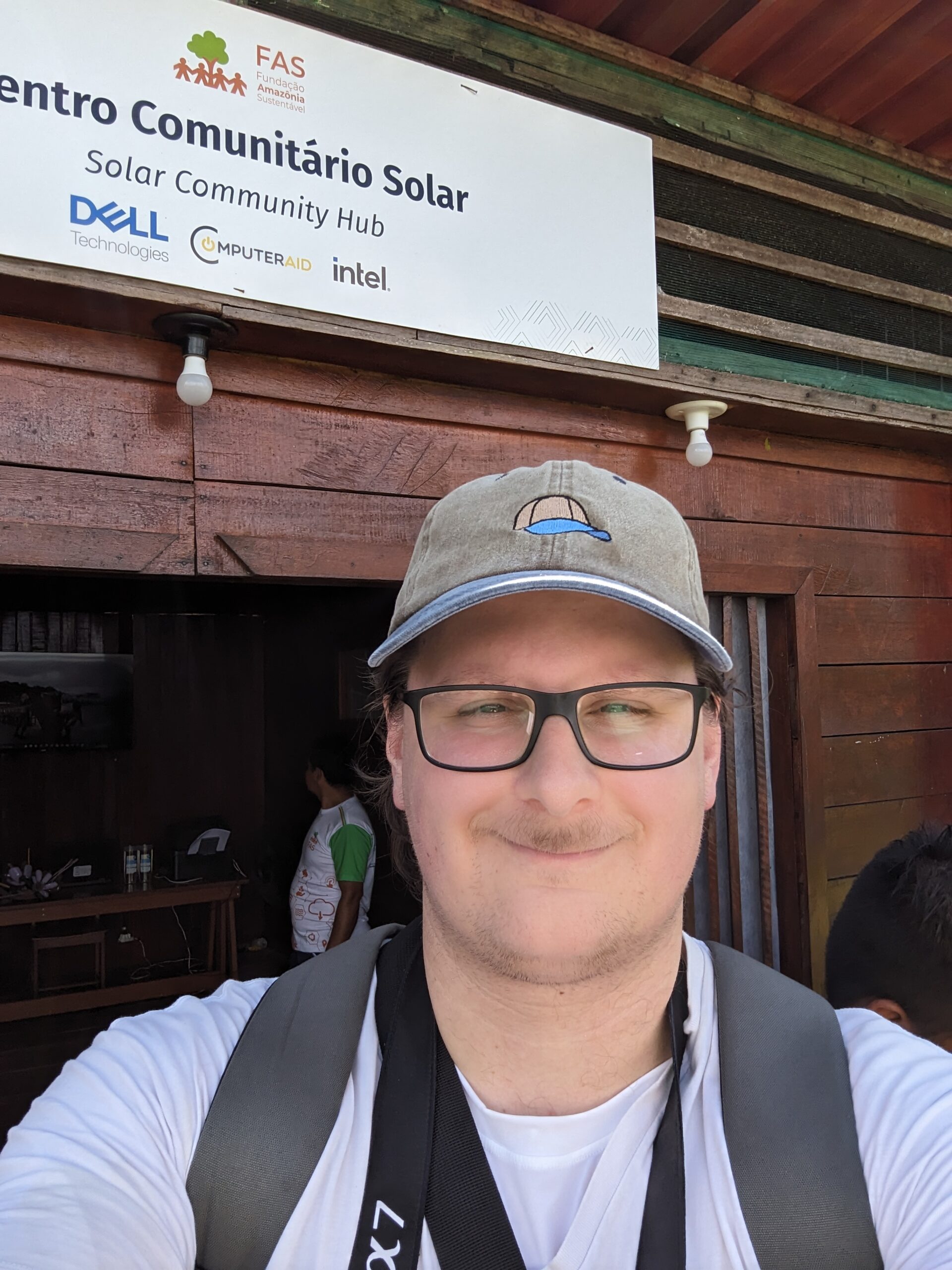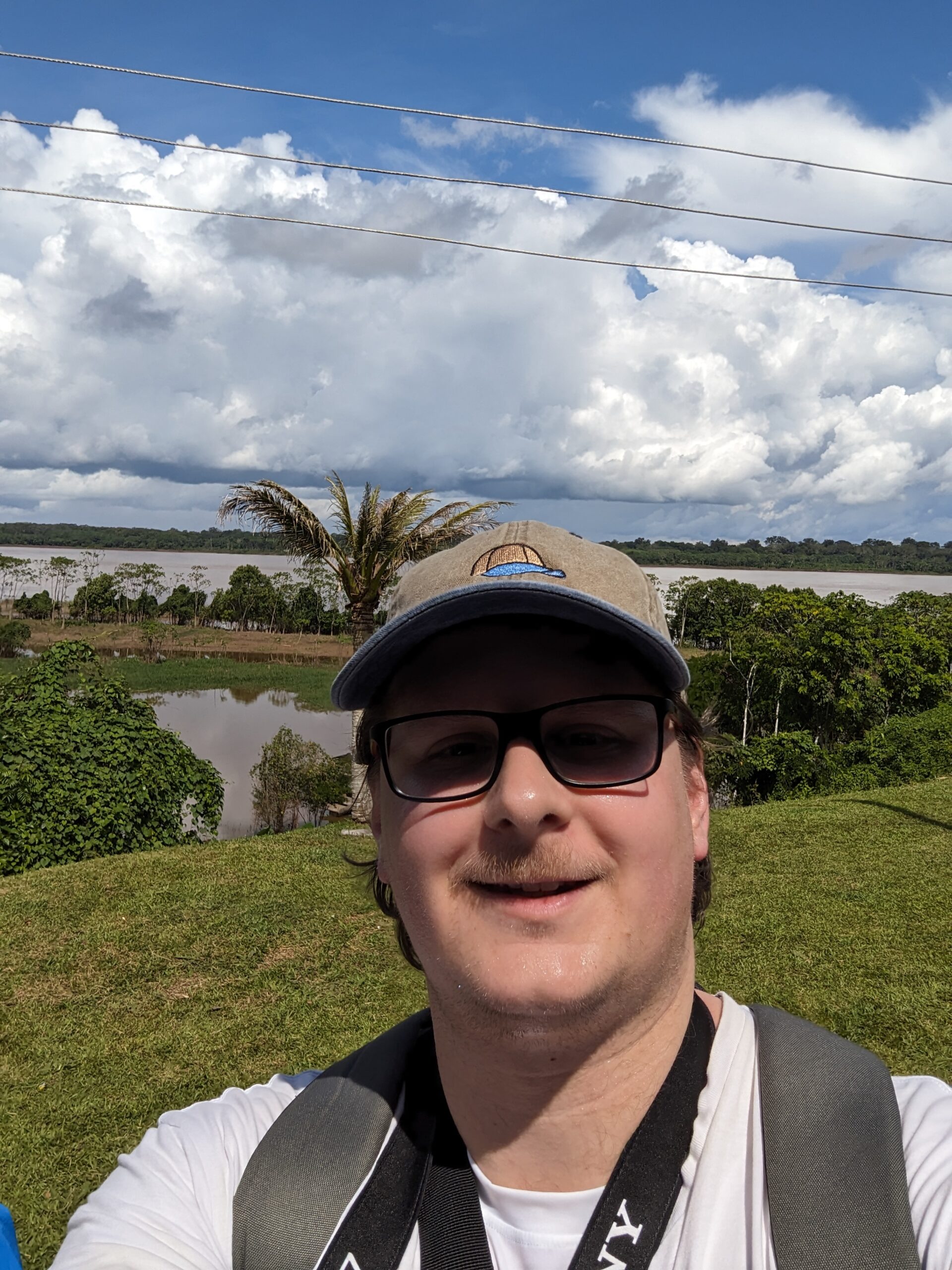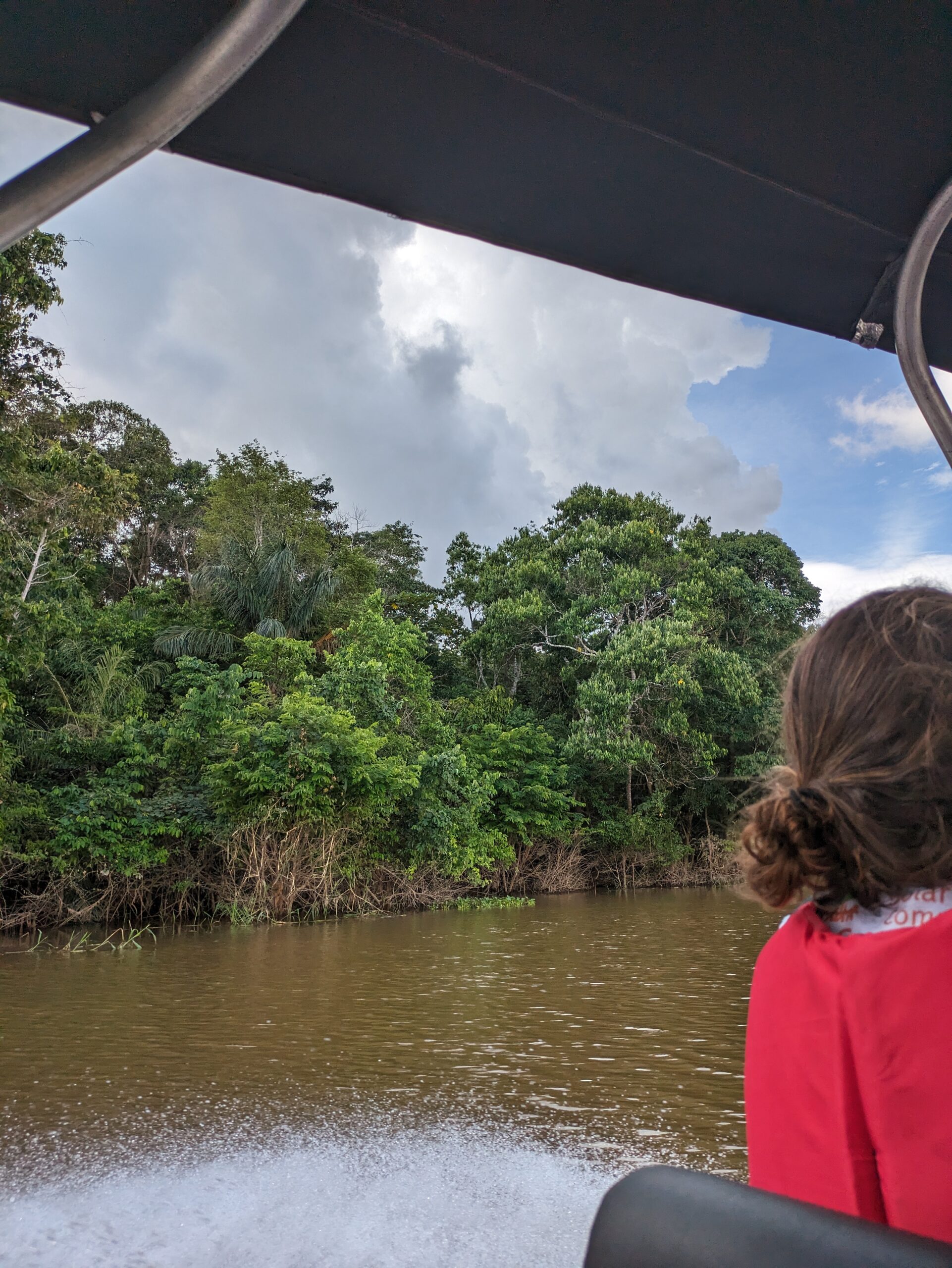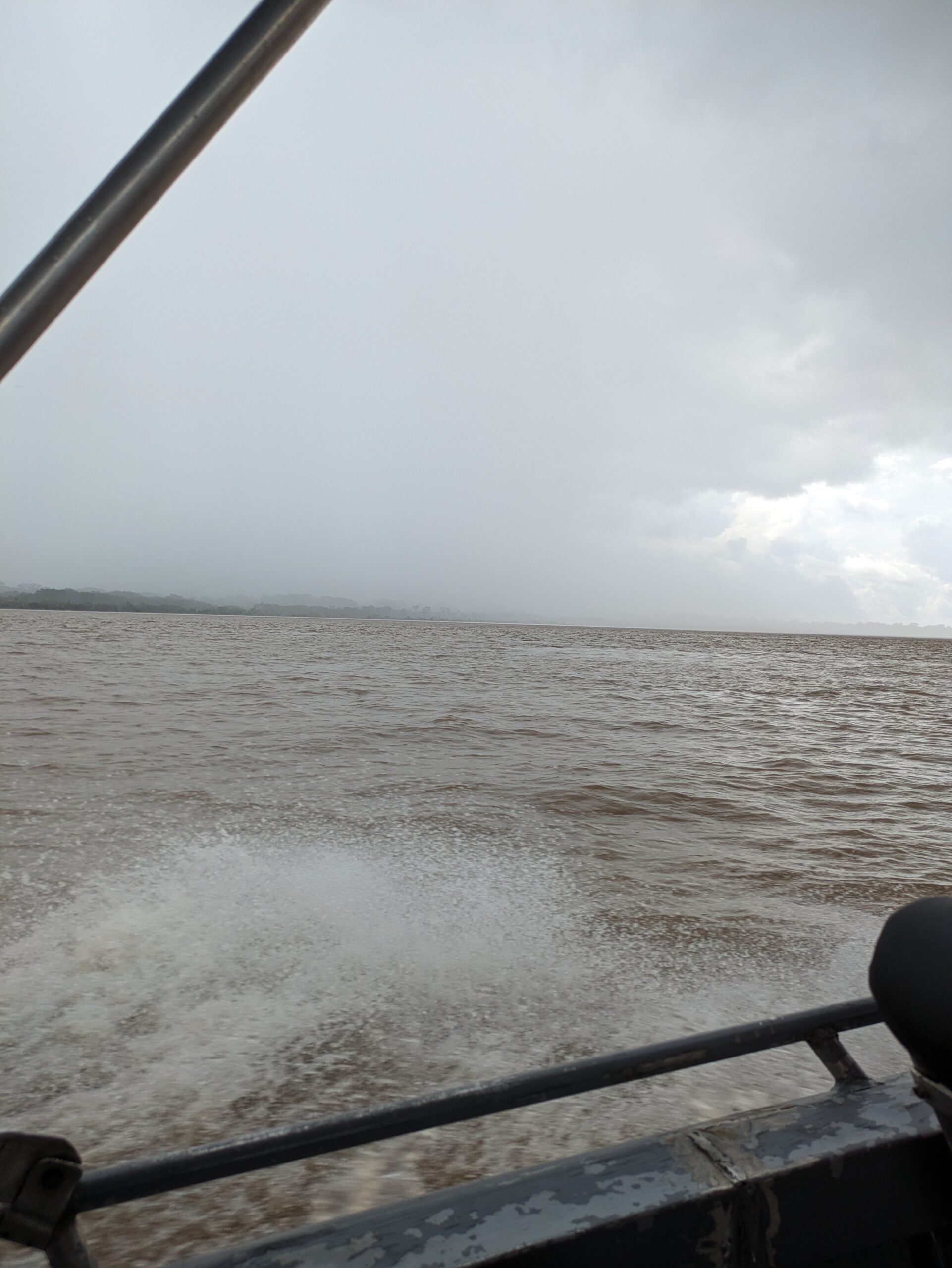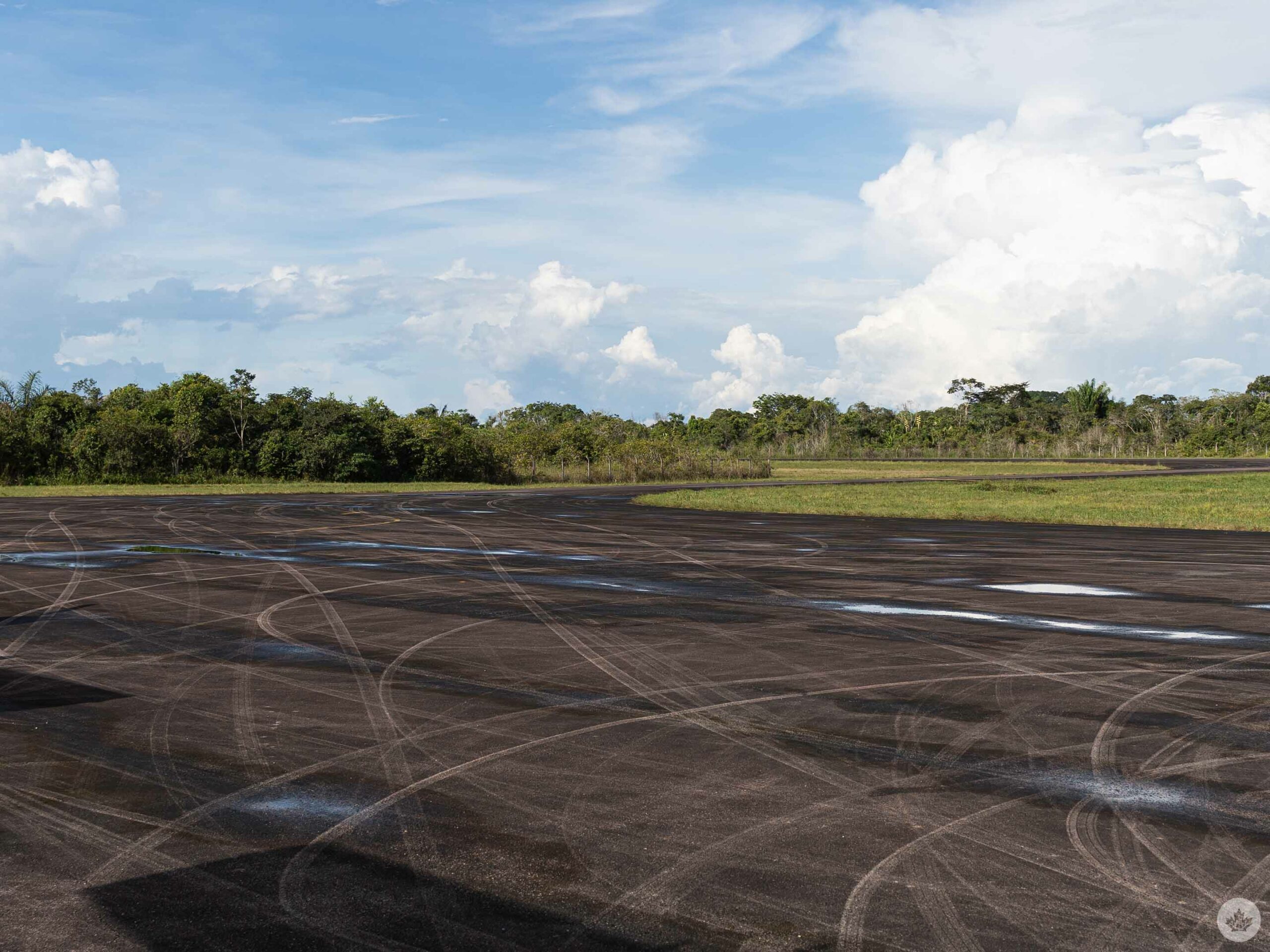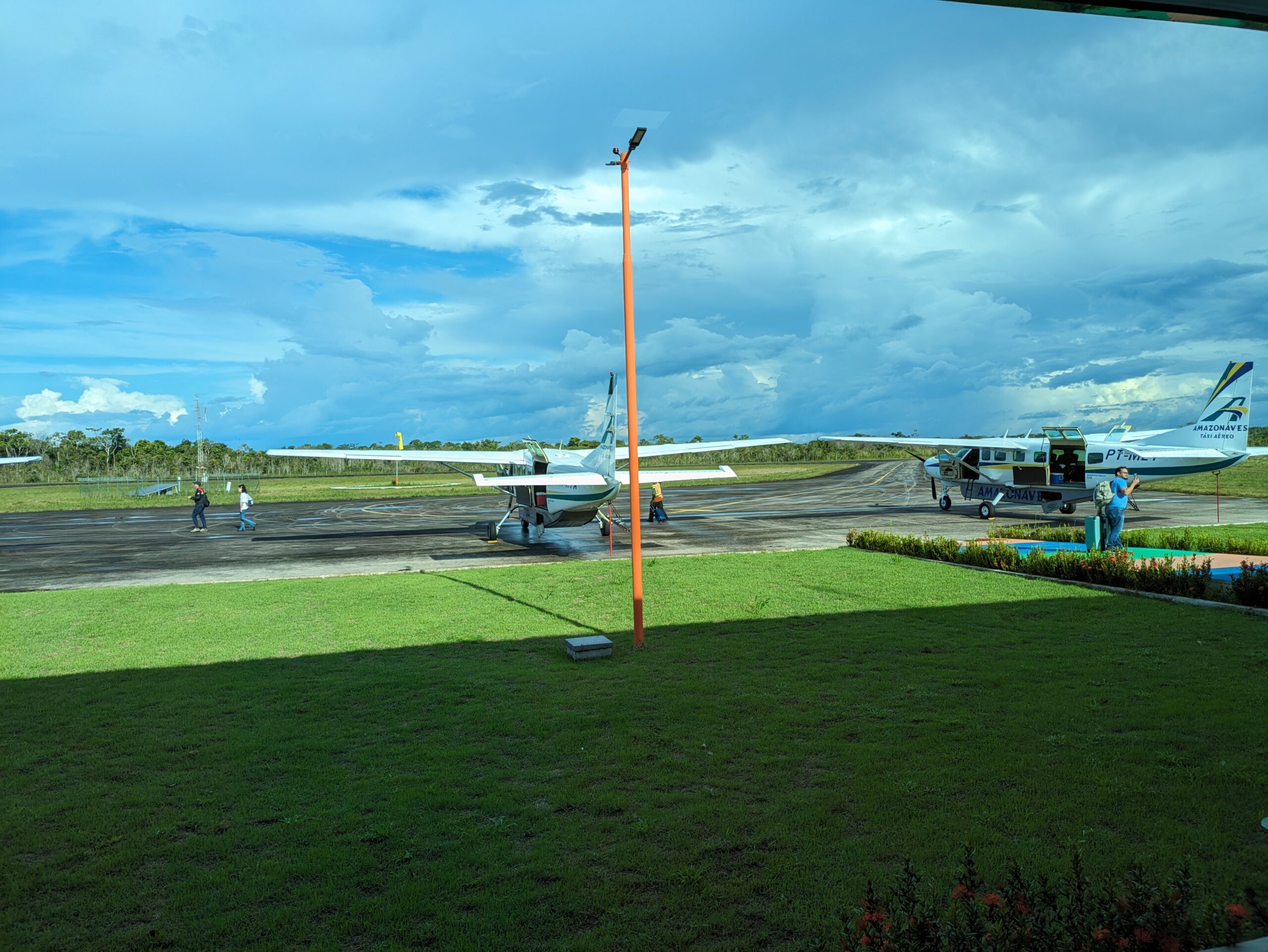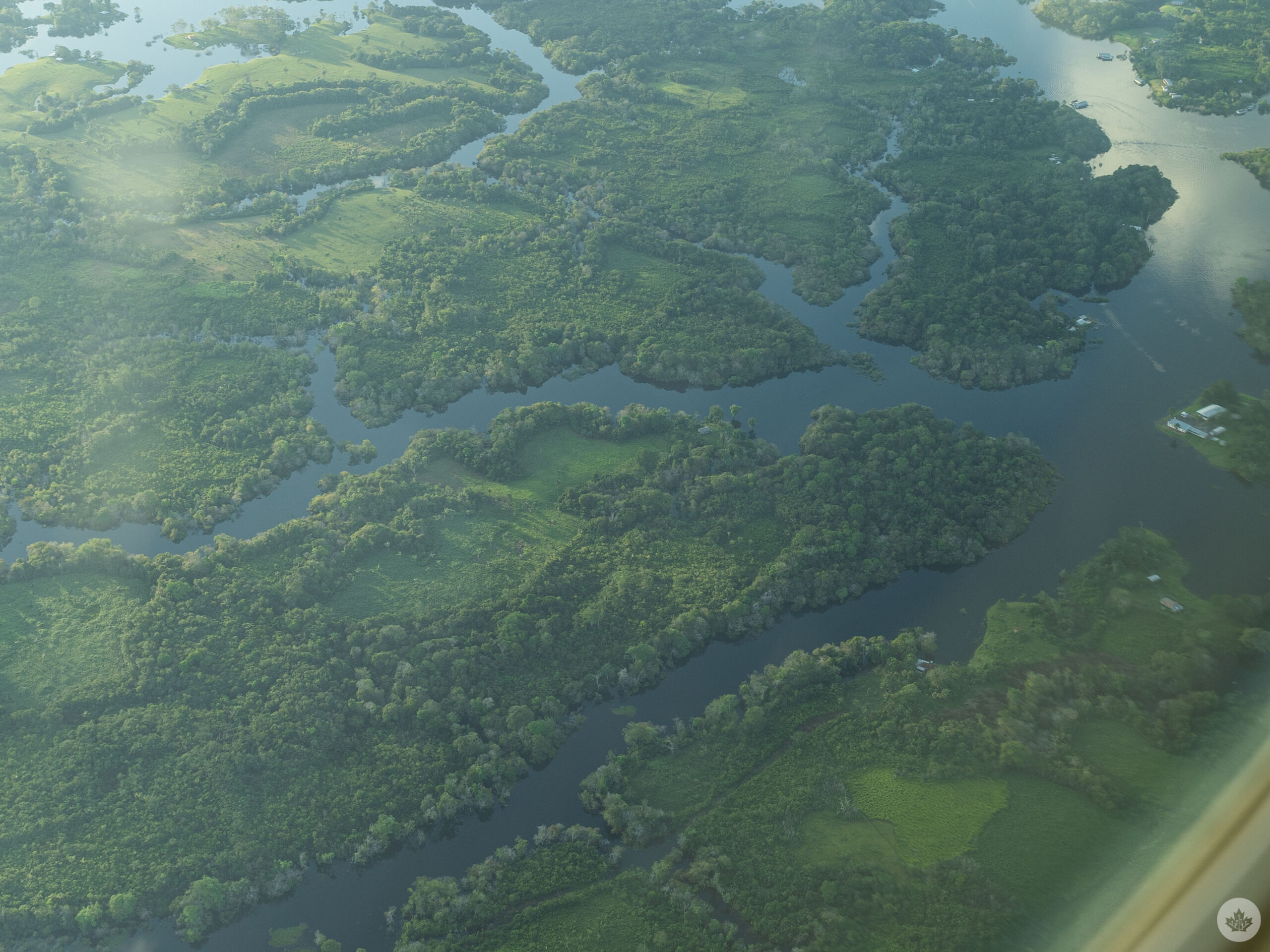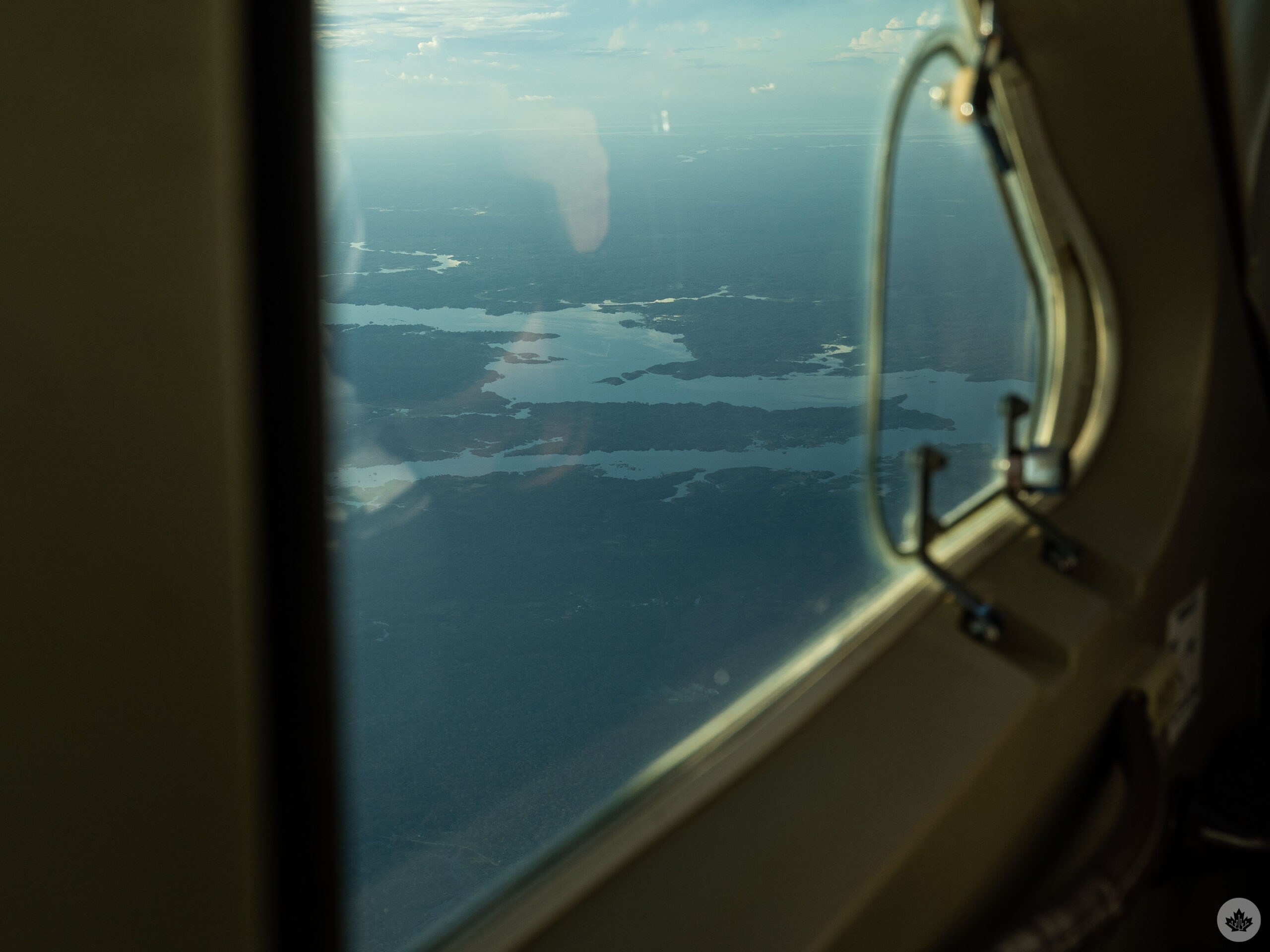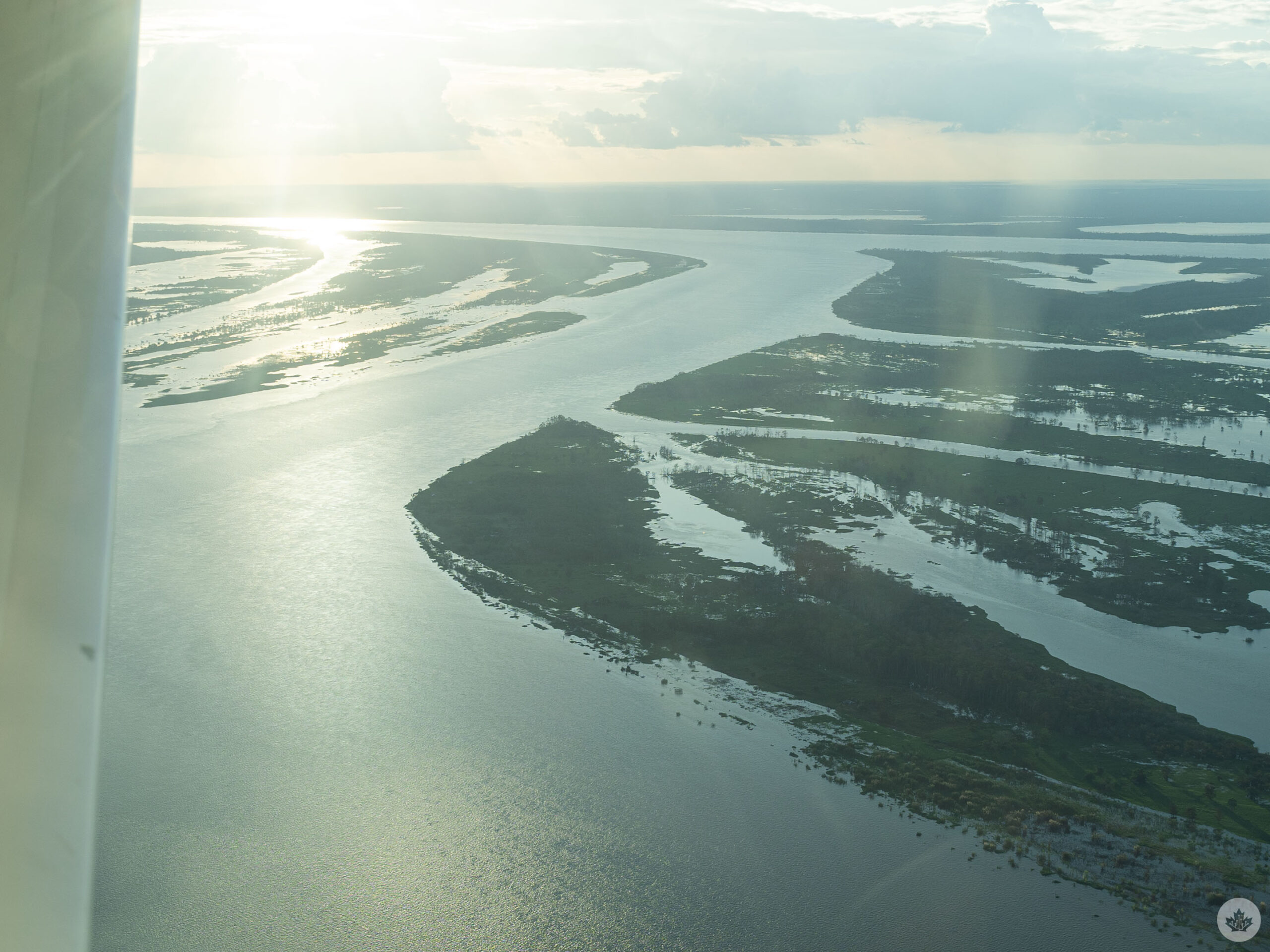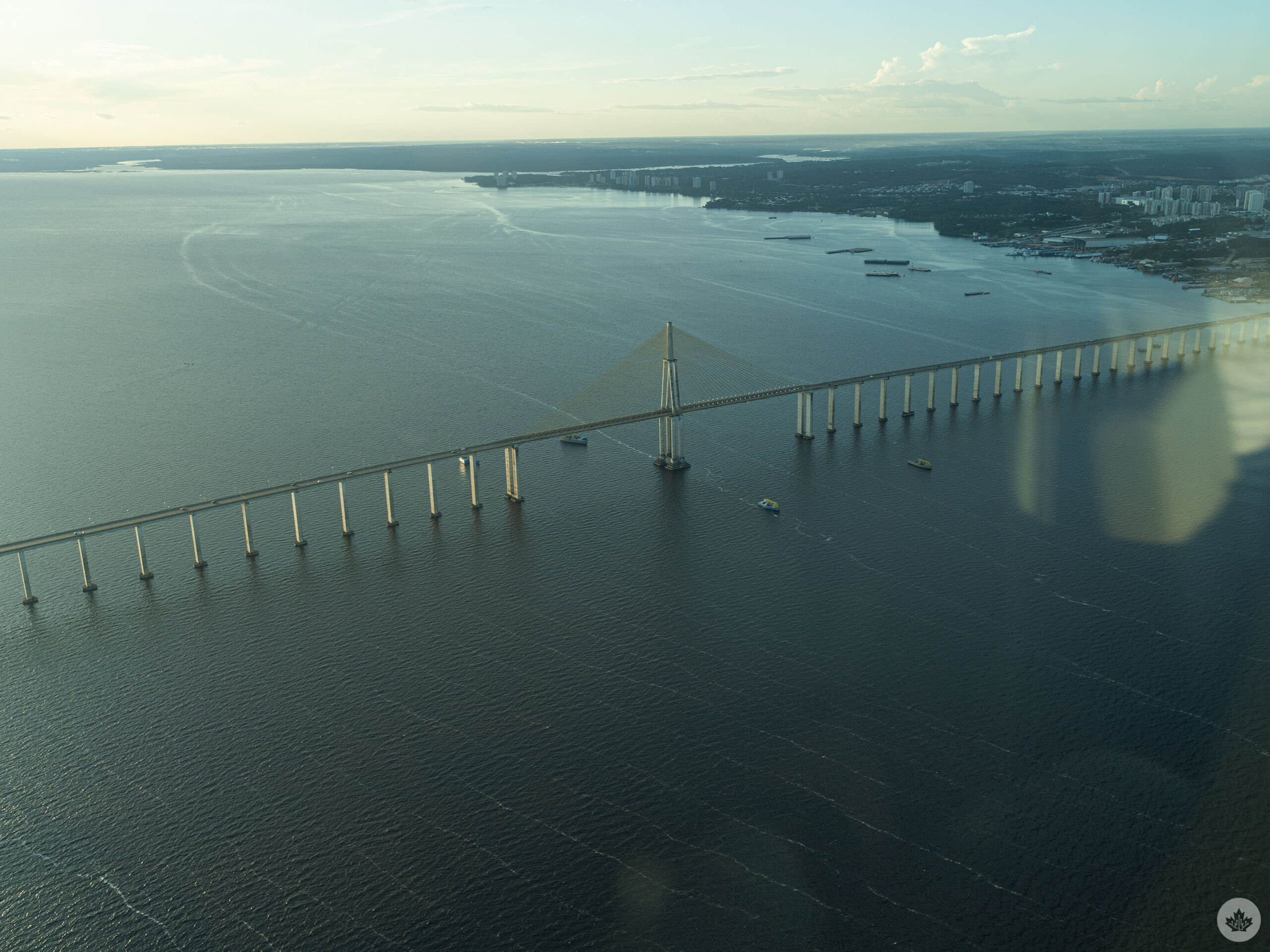
“What could be so special about some shipping containers that I’d travel over 11,000km to see them in a small community nestled in the Amazon Rainforest?”
Standing there on that hill looking at the containers, now fashioned into the Centro Comunitário Solar — the Solar Community Hub — I wondered, briefly. Behind me, the hill fell away steeply toward a small offshoot of the larger Madeira River, the largest tributary of the Amazon River. It was shortly after 9am on June 1st, and the heat was already suffocating. I’d spent the last few hours travelling by plane and riverboat to get to Boa Esperança, a community of roughly 20 families, which overlooked the bank of the Madeira.
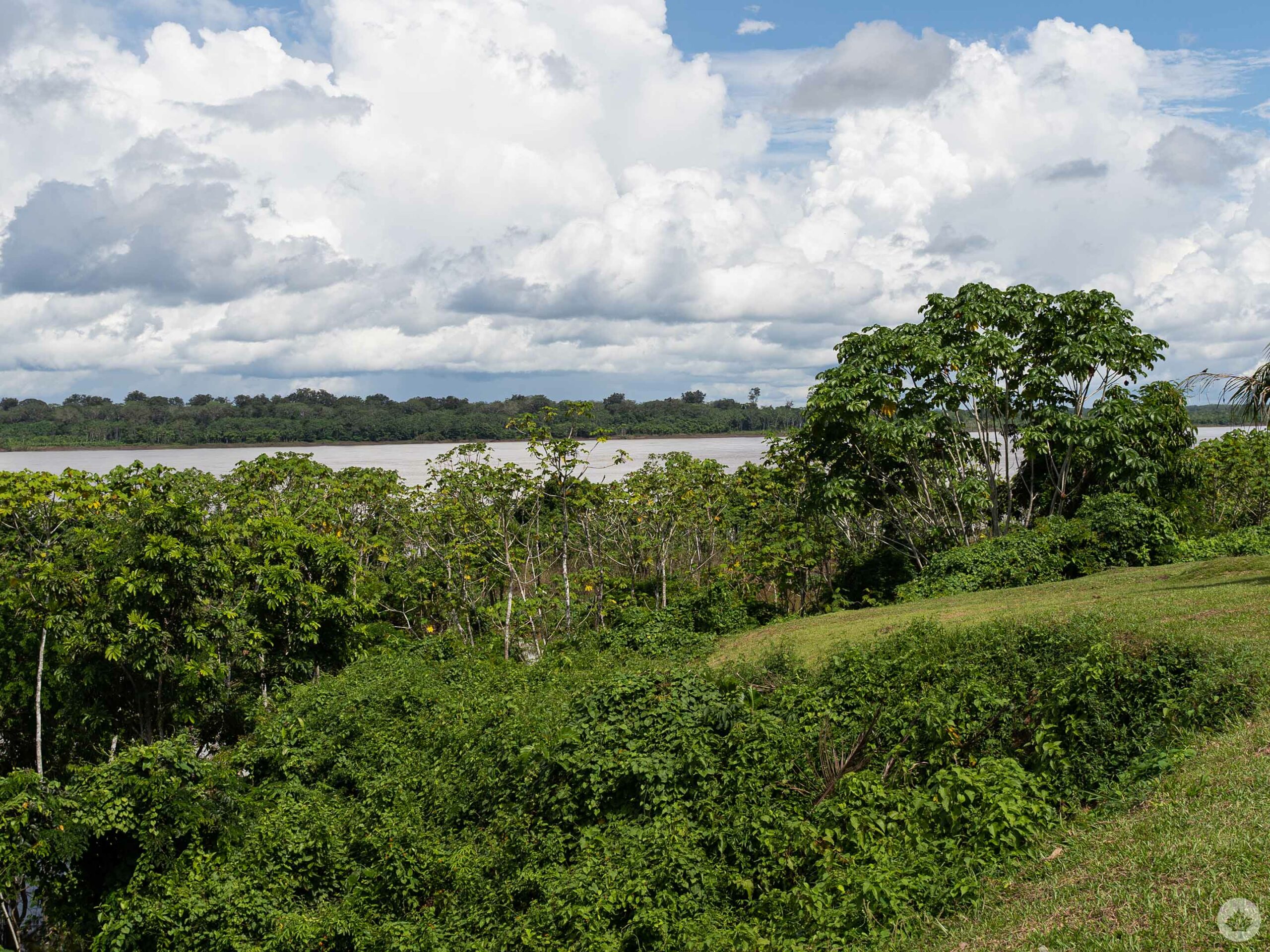
The Madeira River as seen from Boa Esperança.
It quickly became clear just how important the Solar Hub was, not just to the people in Boa Esperança but to nearby communities as well. All told, the hub helps supply health and education services, technology and more to some 1,500 people in nearby riverside communities, as well as the Mura, Tenharim, and Apurinã Indigenous ethnic groups.
“We do not see the Solar Hub as benefits, but as opportunities,” said Luziete Mar, a supervisor at the Solar Hub, via a translator. “Through the Solar Hub, we can study, have medicine, healthcare. It’s an opportunity.”
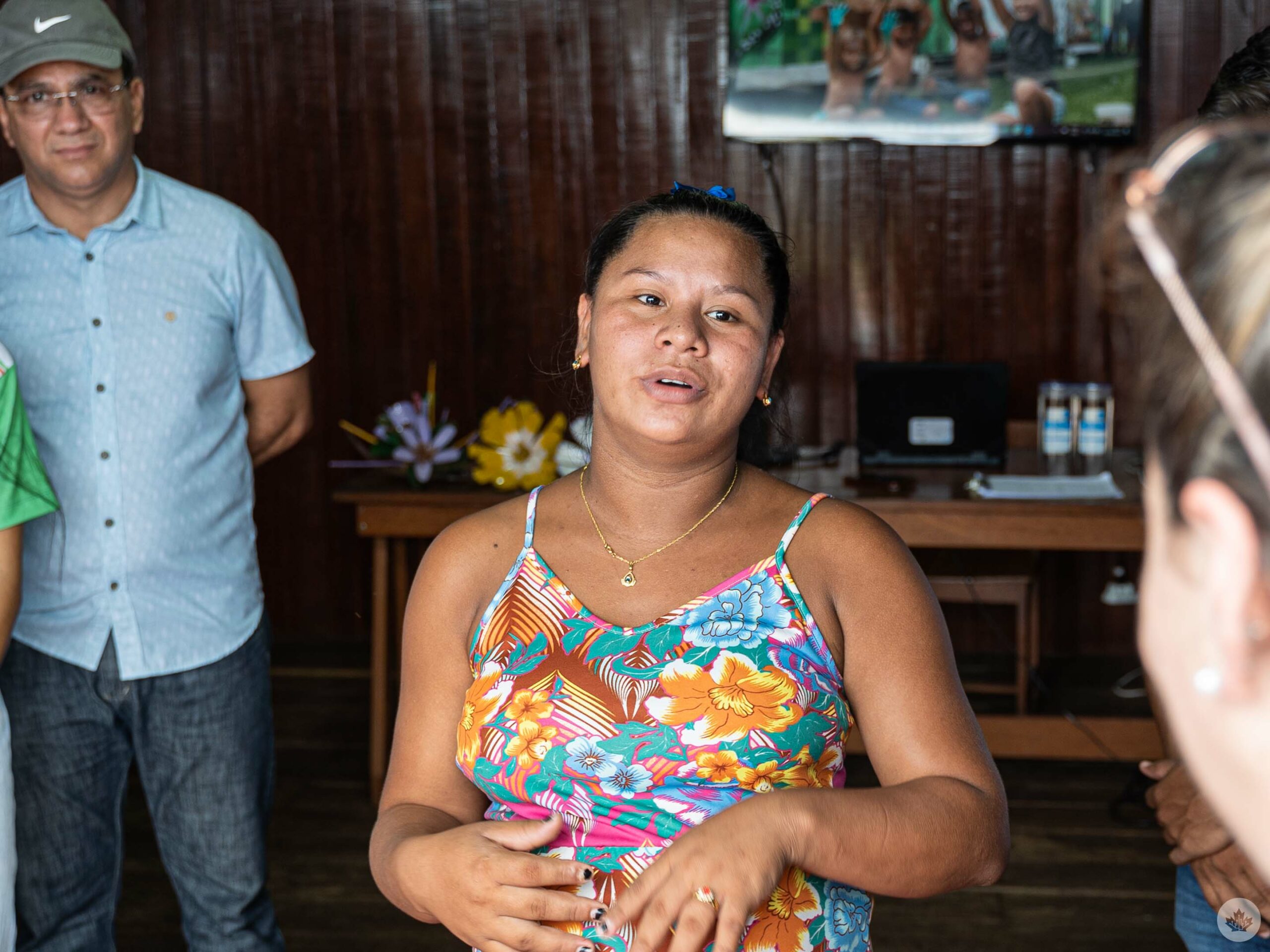
Luziete Mar speaking with visitors at the Solar Community Hub.
The Solar Hub is a joint project between the Fundação Amazônia Sustentável (Sustainable Amazon Fund, or FAS), Dell, Intel, and Computer Aid. Intel and Dell provide funding and technology for the project, while the Solar Hub idea itself stems from Computer Aid, which has similar projects in South America and Africa. FAS, meanwhile, works with the community in various ways, employing some members to work at the Solar Hub. It also facilitates communication between the community and the government to help them get access to supplies, equipment and other benefits.
Into the jungle
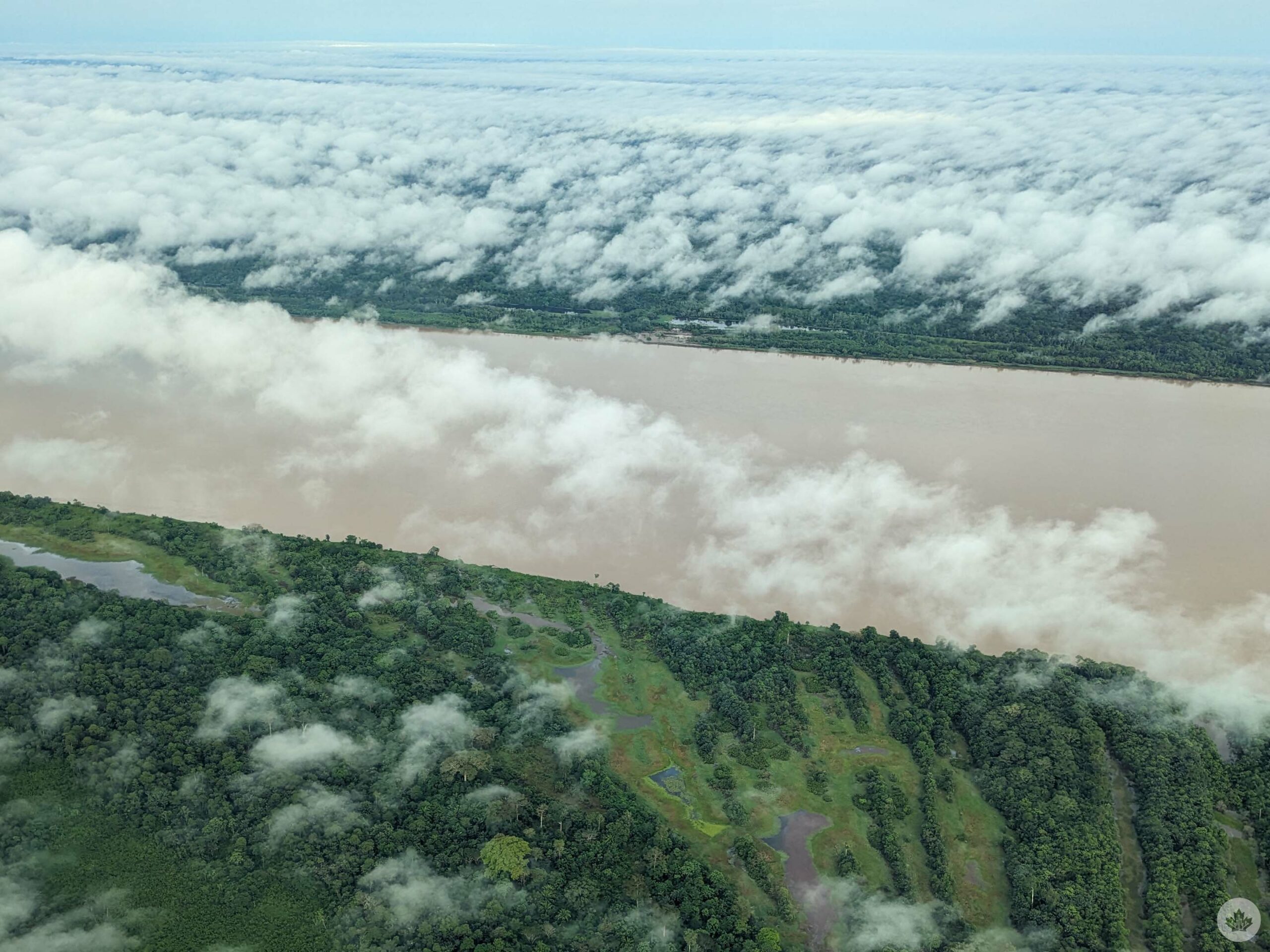
The Madeira River as seen from the sky.
To fully appreciate what the Solar Hub enables, it’s important to understand where it’s located in relation to other cities. I started my journey to Boa Esperança in Manaus, the capital and the largest city in the Brazillian state of Amazonas. Manaus is near the confluence of the Rio Negro and the Amazon River and is home to over 2.2 million people.
I flew from Manaus to the town of Manicoré in a small Cessna 208B Grand Caravan. (An interesting aside: that aircraft uses a PT6 turboprop engine designed by Quebec-based Pratt & Whitney Canada.) The roughly hour-long flight took us about 330km southwest of Manaus over stretches of rainforest, rivers, lakes and other waterways. Manicoré boasts a population of over 56,000 people.
From Manicoré we took boats west along the Madeira River. By river, it was just shy of 40km to Boa Esperança – good conditions let us shave some time off the trip, taking about 45 minutes. However, Boa Esperança isn’t always as accessible by river as when we made our journey. During the dry season, usually from July to September, the community becomes inaccessible the way we went. During the rainy season, the Madeira can rise more than 15m.
Combined with which modes of transit are available to people – not everyone can afford planes or boats as fast as the one I took – getting from Boa Esperança to Manicoré or to Manaus can be difficult, time-consuming and costly. Some I spoke with said the travel could take hours or even days, especially if what they need isn’t available right away.
From shipping containers to opportunity
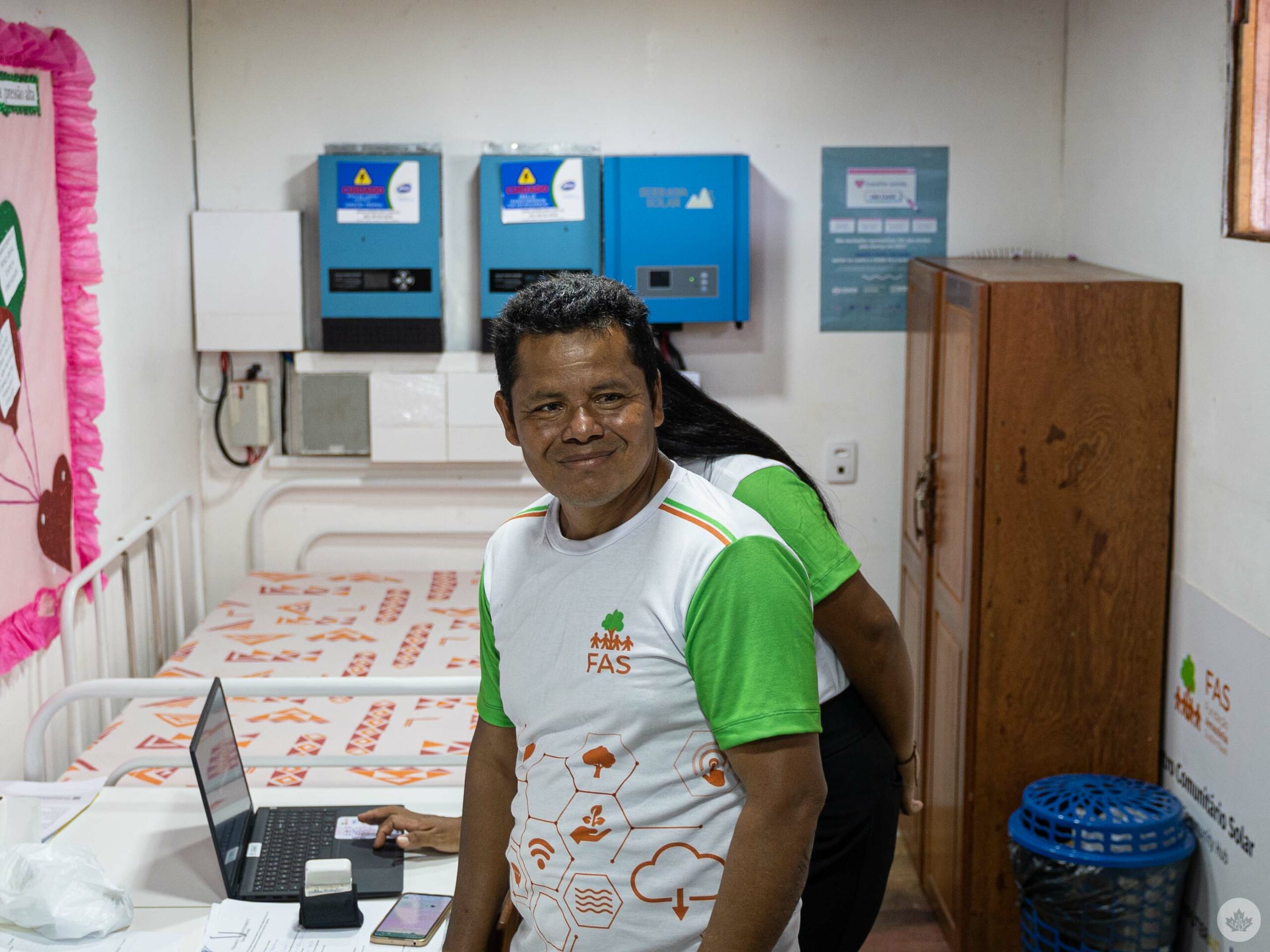
Inside the healthcare side of the Solar Community Hub.
As for the Solar Hub itself, it’s made of two repurposed shipping containers flanking a central wooden structure. In all, the structure is about 60m2 – a little larger than the typical portable classroom you’d see at schools in Ontario. In the central wooden structure, there’s a desk with a couple of Dell laptops, one of which sports rugged construction for use off-site, and a printer. There was also a screen on the wall showing a slideshow of pictures.
The shipping containers are accessible through doors and are air-conditioned. The right-side container features a small computer classroom where students come to learn, while the left side is used to care for the health of people in the community. FAS employees can provide an initial assessment and help connect people to doctors through a laptop. By leveraging telemedicine, the Solar Hub enables faster care and often saves people from a multi-hour or day trip to nearby towns thanks to common medicines stored on-site.
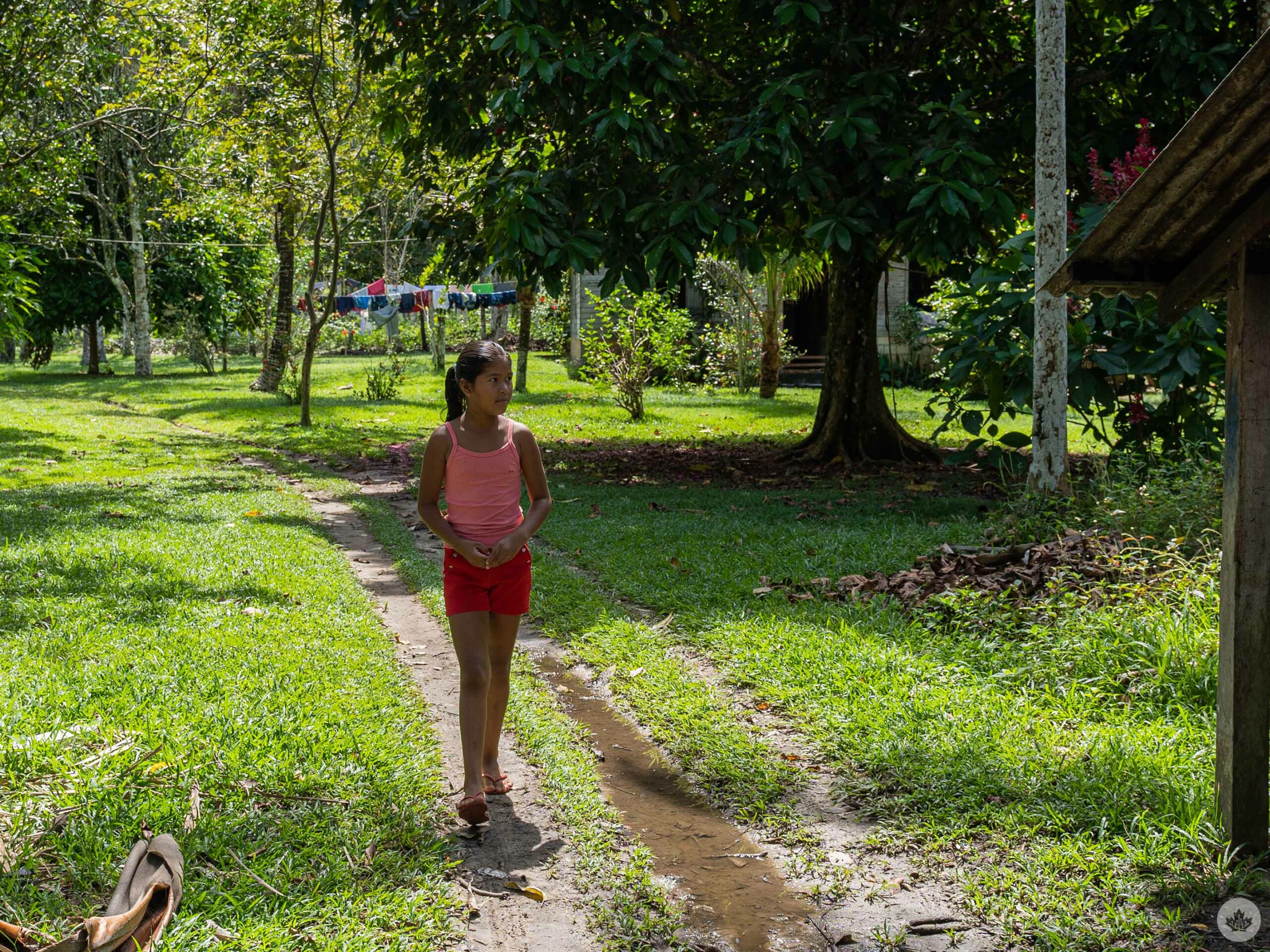 While the healthcare benefits are more immediately clear, the education side is equally important. Having computers and internet access through the Solar Hub creates greater opportunities for learning in the community rather than having young people leave for education.
While the healthcare benefits are more immediately clear, the education side is equally important. Having computers and internet access through the Solar Hub creates greater opportunities for learning in the community rather than having young people leave for education.
Community member Isais Costa is one such example. Through a translator, Costa explained how he started basic teaching and digital literacy in the community but had to leave to get more training to become a professional teacher. Costa returned and now runs classes out of the Solar Hub – he was teaching a group of children about Microsoft’s Office apps when we met him.
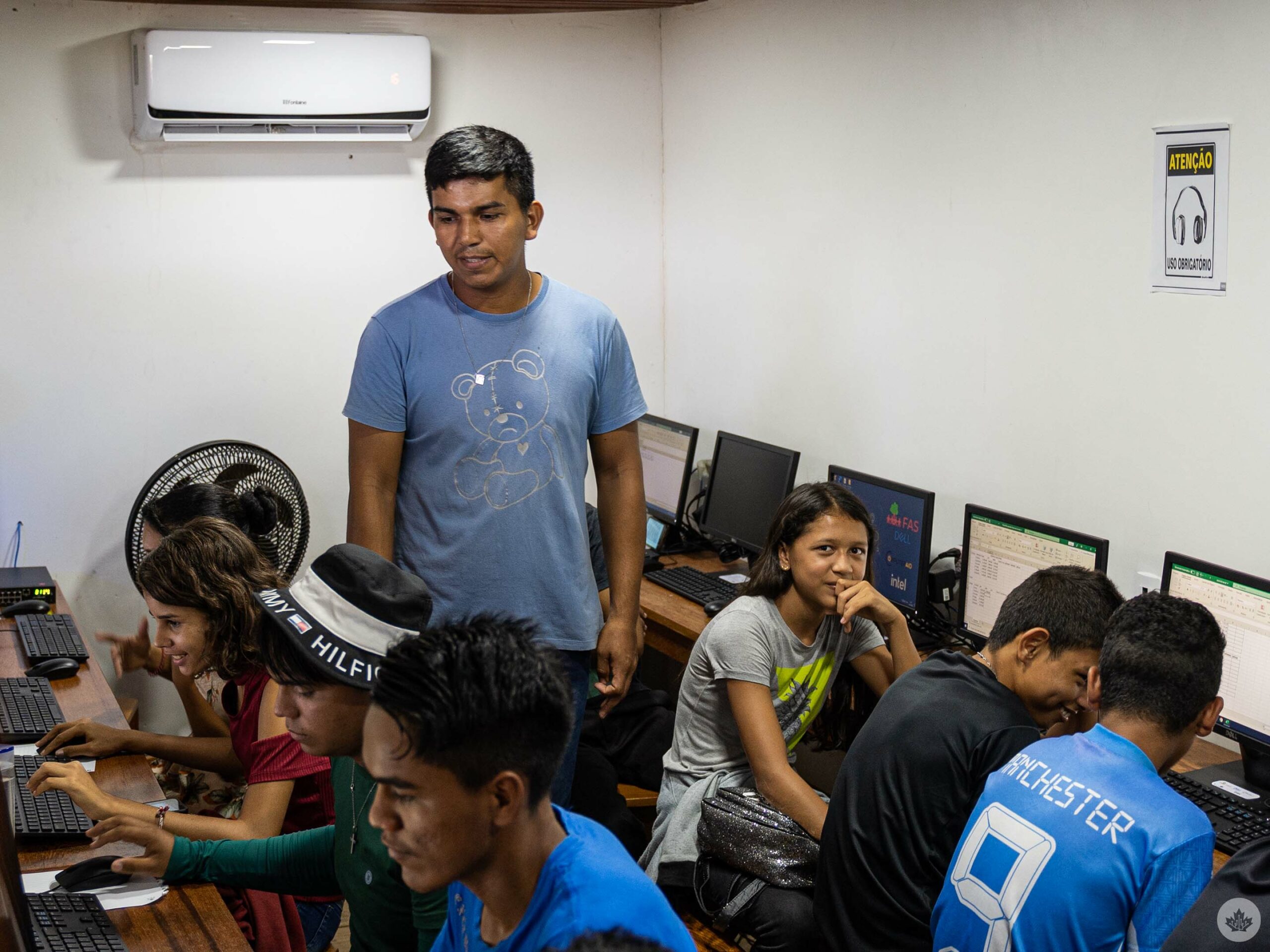
Isais Costa teaching children how to use Microsoft Office apps.
“At the time I was doing university, they didn’t have the Hub here,” Costa said via a translator. “So I needed to go to another place, another city… that was cheaper for me to study and [finish] university. Now in the afternoons and nights, they are able to do university here at the Solar Hub.”
To get people connected, the Solar Hub relies on radio internet through Realnet, though there are plans to transition it to Starlink in the future. (While I was there, the connection seemed to already be over Starlink, however.) The hub also relies on 18 550W solar panels providing a total of 9.9kW of power – enough to run two air conditioners, one for each shipping container — as well as all the computers, laptops and other tech on site.
More than just a classroom
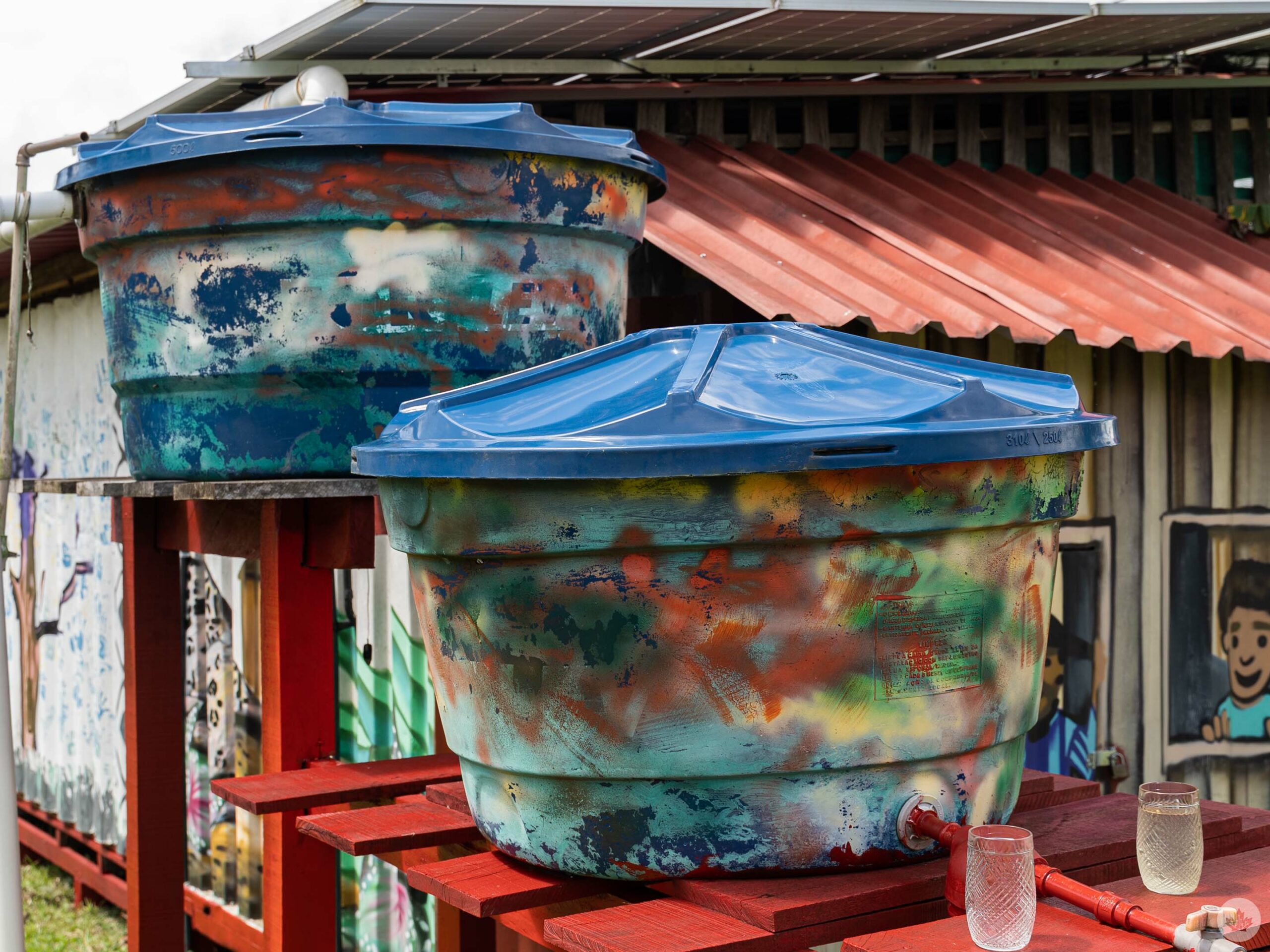
Solar Community Hub water purification system.
While health and education were a focus of the Solar Hub, there’s more on offer. The Hub also supports a water filtration system and a bathroom. According to Lorena Jezini, leader of the community infrastructure agenda at FAS, the Hub uses two filters to clean rainwater collected off the roof – naturally, they get a lot of rain in the Amazon.
“Half of the community uses the water from the [Madeira] river,” Jezini explained. She raised a glass of river water, which had a slightly yellow colour. “Probably this water has some mercury and mud.”
The mercury is a result of small-scale, illegal mining operations that take place along the river. While boating to Boa Esperança, I saw multiple mining vessels anchored on the river. They looked like small houses and were used by prospectors, or garimpeiros in Portuguese, to dredge the river for gold.
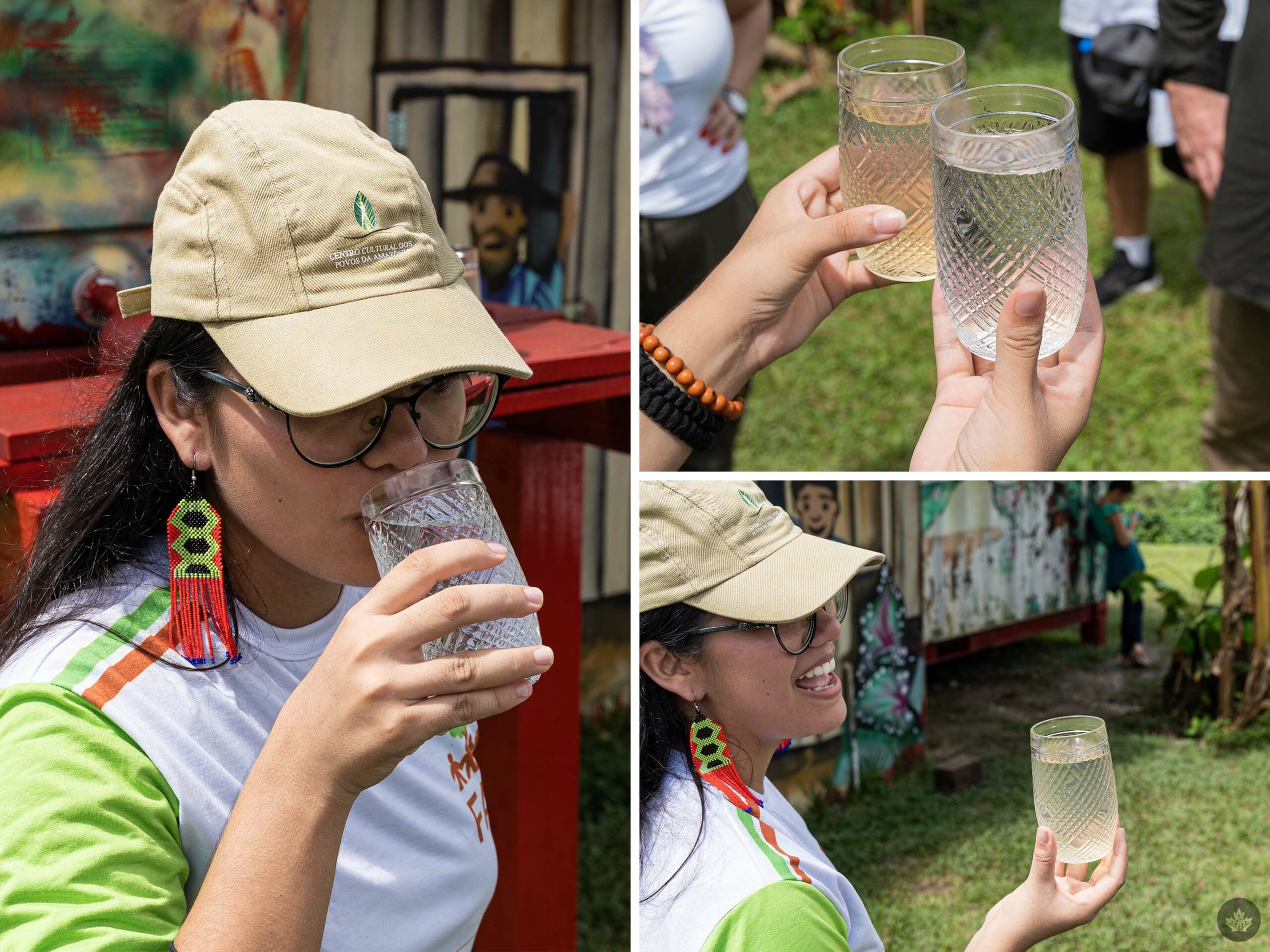
Lorena Jezini showing the difference between river water and water from the purification system.
Garimpeiros separate the gold by mixing liquid mercury with the sediment. The mercury coats the gold, forming a mercury-gold amalgam. Then they burn or boil away the mercury to concentrate the gold. However, the process leeches mercury back into the river, impacting water and food sources for riverside communities like Boa Esperança.
The addition of the water filtration system on the Solar Hub gives the community access to a source of clean water for drinking and cooking, and has also become a larger project FAS wants to bring to other communities in the area.
A Canadian Solar Hub?
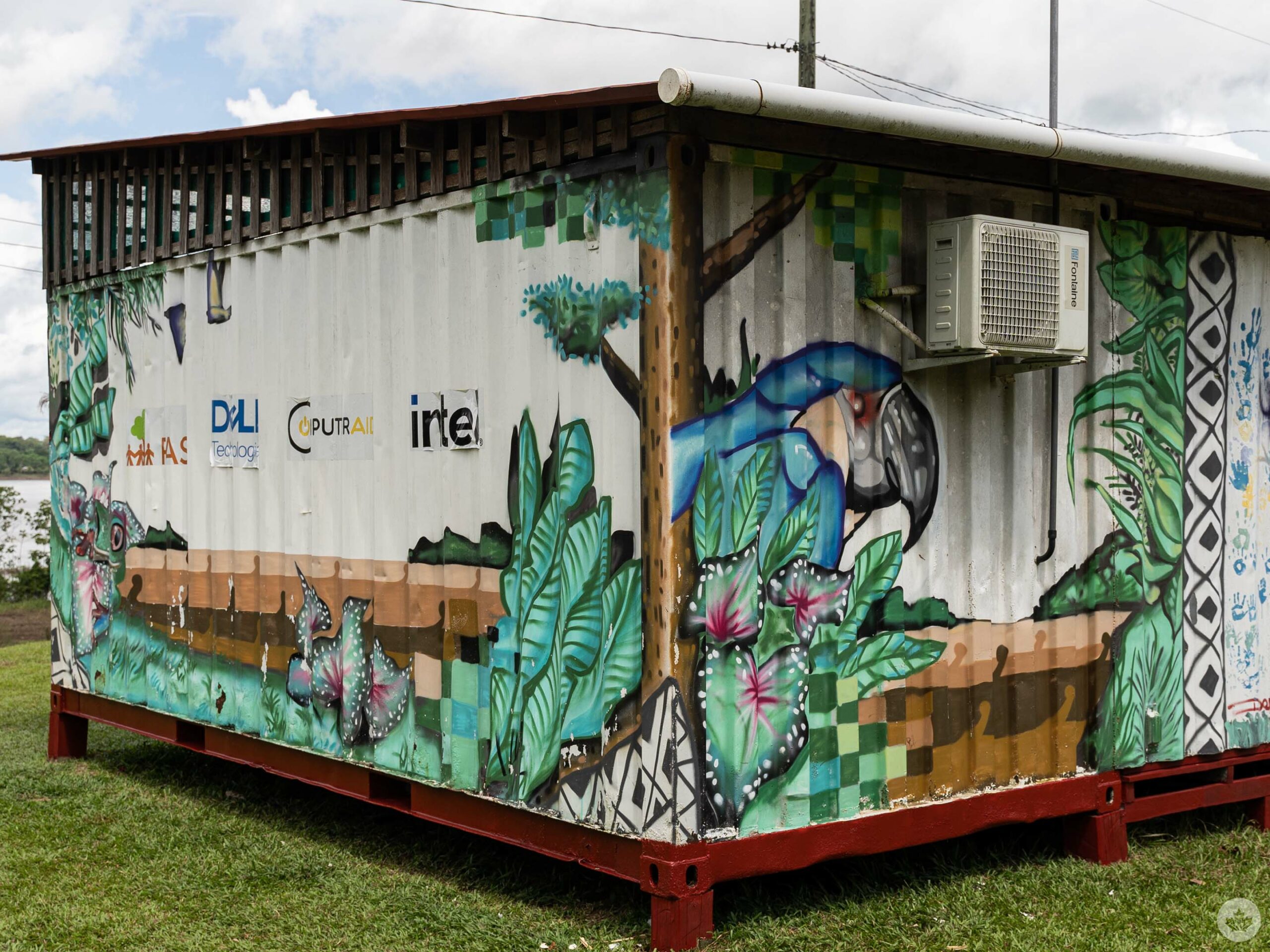
The Hub was painted by members of the community.
Community was a major focus of the Solar Hub project. Several people I spoke with throughout my time in Brazil said it was one of the most important factors in selecting Boa Esperança as the location for the Hub. The people there were heavily involved, which was integral to the project’s long-term success.
The community and FAS work together to develop skills and place people in various roles connected to the Hub – without strong community involvement and without the efforts of FAS, the Hub likely wouldn’t have worked so well.
Strong community and organizational involvement will be key aspects if a similar project ever comes to Canada – something that might be in the cards. “This is something we have had some conversations about, but it’s very initial,” Leonardo Tiarajú, environmental, social and governance (ESG) manager for Dell Latin America, told me when asked about a potential Canadian Solar Hub.
“This is something we have had some conversations about, but it’s very initial,” Leonardo Tiarajú, environmental, social and governance (ESG) manager for Dell Latin America, told me when asked about a potential Canadian Solar Hub.
“We will need to identify potential areas, potential beneficiaries,” Tiarajú said. “Indigenous people from Canada are an example. We need to brainstorm… we need to identify organizations. There’s a lot of work to be done, but definitely Canada is on our radar. It might be a potential country for our next Solar Community Hub, I can say that.”
Header image credit: Intel
MobileSyrup may earn a commission from purchases made via our links, which helps fund the journalism we provide free on our website. These links do not influence our editorial content. Support us here.

